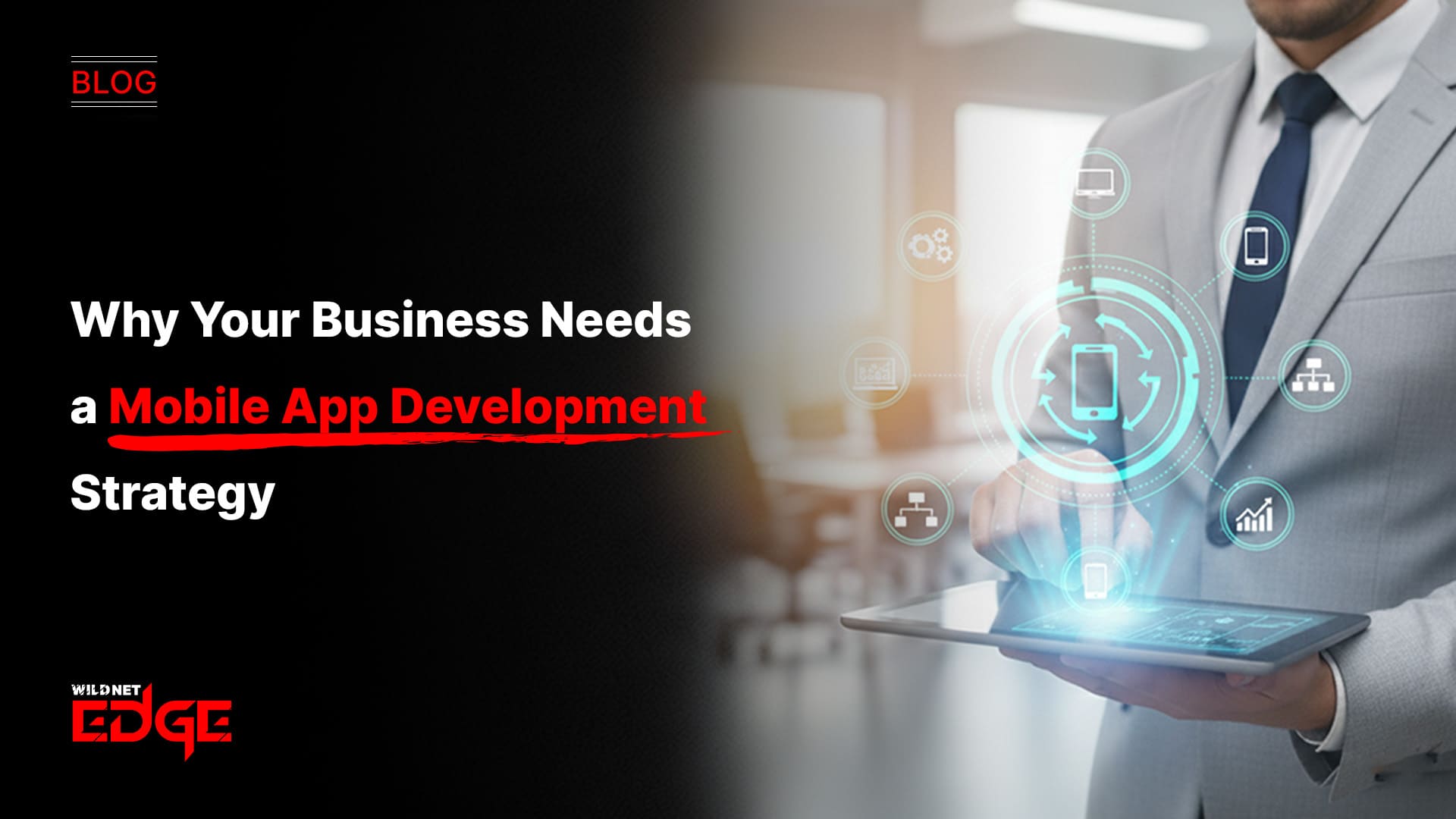TL;DR
This article underscores the necessity for businesses to have a formal mobile app development strategy beyond just deciding to build an app. It explains that a plan provides a crucial roadmap, aligning the app’s goals with broader business objectives and target audience needs. The guide outlines key components of effective mobile app planning, including market research, platform selection (iOS, Android, cross-platform), feature prioritization, and monetization models. It emphasizes that a strategic approach mitigates risks, optimizes resource allocation, and increases the likelihood of achieving significant app-driven growth and a positive return on investment in the competitive mobile landscape.
In 2025, simply having a mobile app is no longer a differentiator; it’s table stakes. Customers expect seamless mobile experiences from the brands they engage with. However, diving into app development without a clear plan is a recipe for wasted resources and a product that fails to deliver value. A comprehensive mobile app development strategy is not just about building an app; it’s about creating the right app for the right audience with the right goals. It is the essential blueprint for app-driven growth.
What is a Mobile App Development Strategy?
A mobile app development strategy is a detailed, long-term plan that outlines how your business will conceive, build, launch, and manage a mobile application to achieve specific, measurable objectives. It goes beyond simply deciding on features; it encompasses market analysis, user research, technology choices, monetization plans, and a go-to-market approach.
Effective mobile app planning involves answering critical questions upfront:
- Why are we building this app? (What business problem does it solve?)
- Who is our target audience? (What are their needs and mobile habits?)
- What defines success? (What are our key performance indicators – KPIs?)
- How will the app generate value? (Revenue, engagement, efficiency?)
- What resources do we need? (Budget, team, technology?)
This strategic framework ensures your app development efforts are focused, aligned with business goals, and have the highest chance of delivering a significant return on investment.
Why a Lack of Strategy Leads to Failure
Many promising app ideas fail because of a lack of strategic planning, not because the concept was bad. Common pitfalls include:
- Building Features Nobody Wants: Without proper user research, you risk investing heavily in features that don’t solve a real user need.
- Choosing the Wrong Platform: Developing for iOS limits your reach when your primary audience is on Android (or vice versa).
- Underestimating Costs: Failing to budget for ongoing maintenance, marketing, and updates can cripple the project post-launch.
- No Clear Path to Monetization: An app without a sustainable business model cannot survive long-term.
- Poor User Experience: A lack of focus on UX design during the planning phase leads to confusing or frustrating apps.
A straightforward mobile app development strategy helps you avoid these costly mistakes.
Key Components of Effective Mobile App Planning
A robust strategy covers several critical areas before development even begins.
1. Market and User Research
Deeply understand your target audience and the competitive landscape. Analyze existing apps, identify unmet user needs, and define your unique value proposition. What will make users choose your app over others?
2. Platform Selection (iOS, Android, Cross-Platform)
Decide which platform(s) to target. Native development (separate apps for iOS and Android) offers the highest performance but is costly. Cross-platform development (using frameworks like Flutter or React Native) is faster and more cost-effective for reaching both audiences simultaneously. Your choice depends on your budget, timeline, and specific feature requirements. Consider specific expertise like Android App Development Services if targeting that platform primarily.
3. Feature Prioritization (MVP Definition)
You cannot build everything at once. Define the Minimum Viable Product (MVP)—the core set of features that solves the primary user problem. Launching an MVP allows faster mobile app validation and iteration based on honest user feedback.
4. Monetization Strategy
How will the app generate revenue or provide business value? Common models include:
- Paid Apps: Users pay upfront.
- Freemium: Basic features are free; advanced features require payment.
- In-App Purchases: Selling digital or physical goods within the app.
- Subscriptions: Users pay a recurring fee for access.
- Advertising: Displaying ads within the app.
- Indirect Value: Driving leads, enhancing brand loyalty, or improving internal efficiency.
5. Technology Stack Selection
Choose the programming languages, frameworks, and backend infrastructure that best suit your app’s requirements, scalability needs, and your team’s expertise. This includes deciding between native technologies (Swift for iOS, Kotlin for Android) or cross-platform options. Expert iOS App Development Services will leverage the latest platform capabilities.
Our Mobile Strategy Services in Action: Case Studies
Case Study 1: A Retailer’s Omnichannel Strategy
- The Challenge: A brick-and-mortar retailer wanted to build an app to bridge its online and offline customer experience, but it lacked a clear strategy for how the app would integrate with its existing systems and drive sales.
- Our Solution: We conducted a comprehensive mobile app planning workshop. We helped them define clear goals focused on loyalty and in-store engagement. The resulting strategy prioritized features like a scannable loyalty card, personalized in-store offers via push notifications, and inventory checking.
- The Result: The app became a central part of their omnichannel strategy. It drove a 15% increase in repeat customer visits to physical stores and provided valuable data on customer preferences, demonstrating successful app-driven growth.
Case Study 2: A Startup’s MVP Validation
- The Challenge: A startup had a limited budget and needed to validate titscore app concept quickly before seeking further investment. TIt wasunsure whether to target iOS or Android first.
- Our Solution: Our mobile app development strategy recommended a cross-platform MVP using Flutter. This allowed them to launch simultaneously within their budget on both platforms, focusing only on the essential features needed for initial user testing.
- The Result: The cross-platform MVP launched successfully in four months. The early user data validated strong demand on both platforms, providing the crucial traction needed to secure their next funding round.
Our Technology Stack for Mobile Development
We leverage modern, high-performance technologies.
- Native: Swift & SwiftUI for iOS, Kotlin for Android
- Cross-Platform: Flutter, React Native
- Backend: Node.js, Python, Go, .NET
- Cloud Platforms: AWS, Google Cloud, Microsoft Azure
- Databases: PostgreSQL, MongoDB, Firebase, Realm
Conclusion
In the dynamic mobile landscape, a well-defined mobile app development strategy is your roadmap to success. It transforms app development from a costly gamble into a calculated investment to achieve specific business goals. By prioritizing mobile app planning, validating your ideas early, and focusing on delivering real user value, you can build an application that not only launches successfully but also drives sustainable app-driven growth.
Ready to build a mobile app with a clear path to ROI? At Wildnet Edge, our AI-first approach enhances our Mobile App Development Services. We don’t just build apps; we partner with you to create intelligent, data-driven mobile experiences that deliver measurable results.
FAQs
The cost for the strategy phase itself (discovery, research, planning) is a fraction of the total development cost, but it is a crucial investment. It typically involves workshops and research conducted over several weeks and sets the foundation for the entire project budget.
The MVP definition forces you to prioritize ruthlessly and focus on solving the core user problem first. This minimizes initial investment, accelerates time-to-market, and allows you to gather honest user feedback before building potentially unnecessary features, maximizing the efficiency of your mobile app planning.
The choice depends on your budget, timeline, performance requirements, and need to access particular native features. Cross-platform is often ideal for MVPs and many business apps due to cost and speed. Native might be preferred for graphically intensive games or apps needing cutting-edge OS features immediately.
User feedback is critical for ongoing iteration and achieving product-market fit. Your initial strategy should include a plan for collecting and analyzing feedback (through analytics, surveys, reviews) to inform future updates and ensure your app continues to meet user needs.
Your app can be a powerful tool for achieving larger goals. For example, it can drive foot traffic to physical stores, improve customer support efficiency, generate high-quality leads for your sales team, or provide valuable data insights for product development.
Key metrics often include user acquisition cost (CAC), user retention rate, churn rate, daily/monthly active users (DAU/MAU), session length, conversion rates (for specific goals), and customer lifetime value (LTV).
The best starting point is a discovery workshop with an experienced mobile app development partner. They can guide you through defining your goals, understanding your audience, analyzing the competition, and outlining the key components of a successful mobile app development strategy.

Nitin Agarwal is a veteran in custom software development. He is fascinated by how software can turn ideas into real-world solutions. With extensive experience designing scalable and efficient systems, he focuses on creating software that delivers tangible results. Nitin enjoys exploring emerging technologies, taking on challenging projects, and mentoring teams to bring ideas to life. He believes that good software is not just about code; it’s about understanding problems and creating value for users. For him, great software combines thoughtful design, clever engineering, and a clear understanding of the problems it’s meant to solve.
 sales@wildnetedge.com
sales@wildnetedge.com +1 (212) 901 8616
+1 (212) 901 8616 +1 (437) 225-7733
+1 (437) 225-7733































